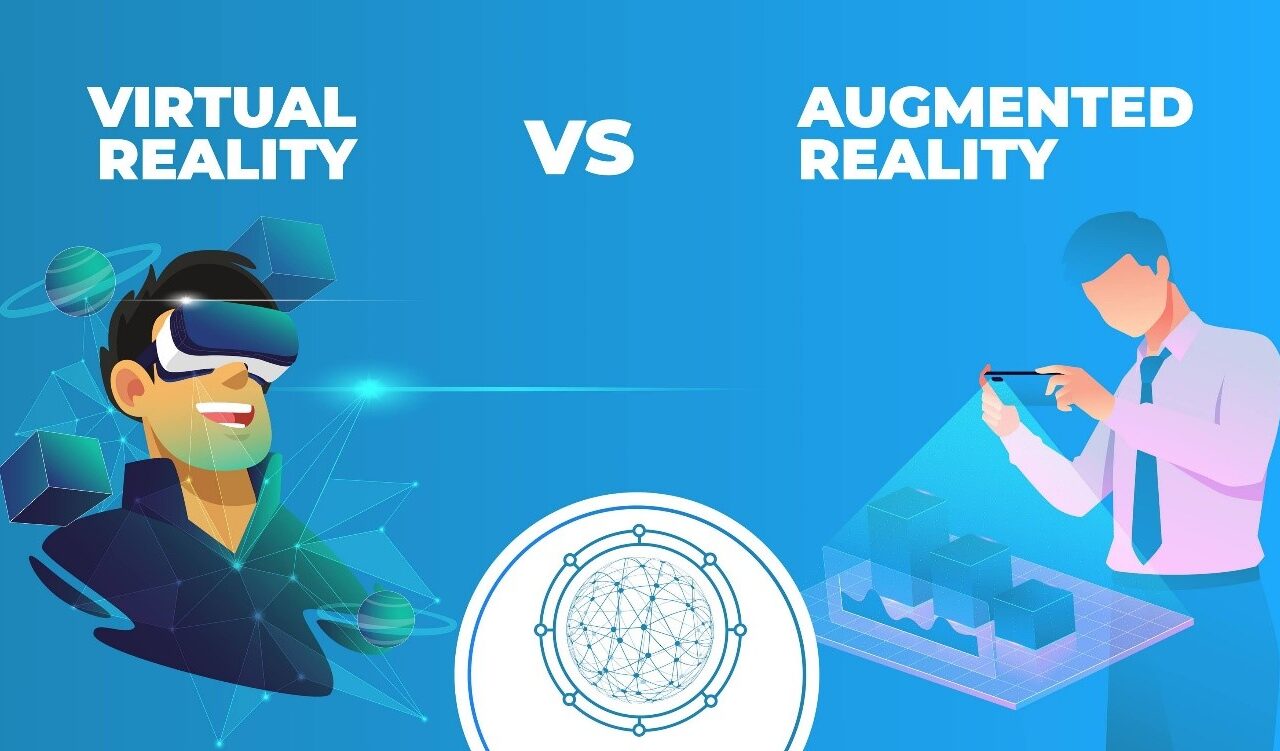Augmented Reality (AR) and Virtual Reality (VR) are two distinct technologies that offer immersive experiences, but they have different applications and characteristics. Here’s an overview of AR and VR, along with their differences:
Augmented Reality (AR):
AR involves overlaying digital information or virtual objects onto the real world, blending the virtual and physical environments. AR enhances our perception of reality by adding computer-generated elements. AR can be experienced through various devices, including smartphones, tablets, smart glasses, and heads-up displays. Some key applications of AR are:
1. Gaming: AR gaming involves incorporating virtual objects or characters into the real world, allowing users to interact with them in real-time. Games like Pokémon Go and Harry Potter: Wizards Unite are popular examples of AR gaming.
2. Retail and E-commerce: AR enables virtual try-on experiences, where users can visualize products like clothing, accessories, or furniture in real-time, overlaid onto their surroundings. This helps customers make more informed purchase decisions.
3. Education and Training: AR is used to create interactive and immersive learning experiences. It allows for virtual simulations, 3D models, and overlays of educational content on real objects, enhancing understanding and engagement in subjects like science, history, and anatomy.
4. Navigation and Wayfinding: AR can provide real-time information and directions overlaid onto the user’s surroundings. AR navigation apps help users navigate unfamiliar environments by superimposing digital maps and directions onto the real world.
Virtual Reality (VR):
VR creates a completely simulated virtual environment, isolating users from the physical world and immersing them in a digitally created environment. Users typically experience VR through headsets or goggles that fully immerse them in the virtual environment. Some key applications of VR include:
1. Gaming and Entertainment: VR gaming offers highly immersive and interactive experiences, allowing users to feel like they are physically present in the game world. VR also extends to immersive 360-degree videos, virtual tours, and cinematic experiences.
2. Training and Simulations: VR provides a safe and controlled environment for training in various industries, such as aviation, healthcare, and military. It allows trainees to practice tasks and scenarios without real-world risks. VR simulations can also be used for architectural walkthroughs and prototyping.
3. Virtual Meetings and Collaboration: VR enables remote collaboration by creating virtual meeting spaces where participants can interact and collaborate in a shared virtual environment, regardless of their physical locations.
4. Therapy and Rehabilitation: VR is utilized for therapeutic purposes, such as exposure therapy for phobias or post-traumatic stress disorder (PTSD). It also assists in physical rehabilitation by creating interactive environments for patients to regain motor skills or manage pain.
Differences between AR and VR:
1. Immersion: VR provides a fully immersive experience where users are completely immersed in a simulated environment. AR, on the other hand, overlays virtual elements onto the real world, allowing users to remain aware of their physical surroundings.
2. Environment: VR creates a completely synthetic virtual environment, whereas AR combines virtual elements with the real world.
3. Devices: VR experiences typically require dedicated headsets or goggles, while AR experiences can be accessed through smartphones, tablets, or specialized AR glasses.
4. Interactivity: Both AR and VR offer interactive experiences, but the level of interactivity differs. VR often allows users to interact more extensively with the virtual environment, whereas AR interactions are usually limited to virtual objects overlaid onto the real world.
In summary, AR enhances the real world by overlaying virtual elements onto it, while VR creates entirely simulated virtual environments. AR finds applications in gaming, retail, education, and navigation, while VR is commonly used in gaming, training, simulations, and immersive experiences. Both technologies offer unique and exciting opportunities for various industries and continue to evolve, driving innovation in the
way we perceive and interact with our surroundings.





